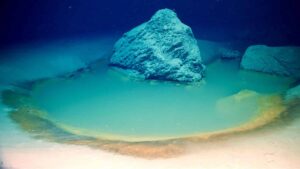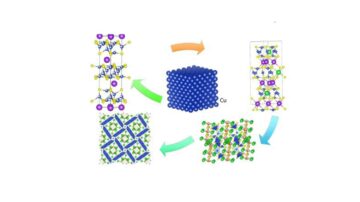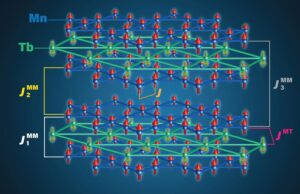In a new study, scientists from RMIT University used electron microscopy to map the relative distribution of coexisting lonsdaleite, diamond, and graphite in ureilites. These maps show that lonsdaleite tends to occur as polycrystalline grains, sometimes with distinctive fold morphologies, partially replaced by diamond + graphite in rims and cross-cutting veins.
The analysis confirmed that these strange diamonds from an ancient dwarf planet in our solar system may have formed shortly after the dwarf planet collided with a large asteroid about 4.5 billion years ago.
One of the senior researchers involved, RMIT Professor Dougal McCulloch, said the team predicted the hexagonal structure of lonsdaleite’s atoms made it potentially harder than regular diamonds, which had a cubic system.
“This study proves categorically that lonsdaleite exists in nature.”
“We have also discovered the largest lonsdaleite crystals known to date that are up to a micron in size – much thinner than a human hair.”
“the unusual structure of lonsdaleite could help inform new manufacturing techniques for ultra-hard materials in mining applications.”
Using electron microscopy techniques, scientists captured solid and intact slices from the meteorites to create snapshots of how lonsdaleite and regular diamonds formed.
McCulloch said, “There’s strong evidence that there’s a newly discovered formation process for the lonsdaleite and regular diamond, which is like a supercritical chemical vapor deposition process that has taken place in these space rocks, probably in the dwarf planet shortly after a catastrophic collision.”
“Chemical vapor deposition is one of the ways that people make diamonds in the lab, essentially by growing them in a specialized chamber.”
Geologist Professor Andy Tomkins from Monash University said, “The team proposed that lonsdaleite in the meteorites formed from a supercritical fluid at high temperature and moderate pressures, almost perfectly preserving the shape and textures of the pre-existing graphite.”
“Later, lonsdaleite was partially replaced by a diamond as the environment cooled and the pressure decreased.”
“Nature has thus provided us with a process to try and replicate in industry. We think that lonsdaleite could be used to make tiny, ultra-hard machine parts if we can develop an industrial process that promotes the replacement of pre-shaped graphite parts by lonsdaleite.”
“The study findings helped address a long-standing mystery regarding the formation of the carbon phases in ureilites.”
Journal Reference:
- Andrew G. Tomkins, Nicholas C. Wilson et al. Sequential Lonsdaleite to Diamond Formation in Ureilite Meteorites via In Situ Chemical Fluid/Vapor Deposition. PNAS. DOI: 10.1073/pnas.2208814119













